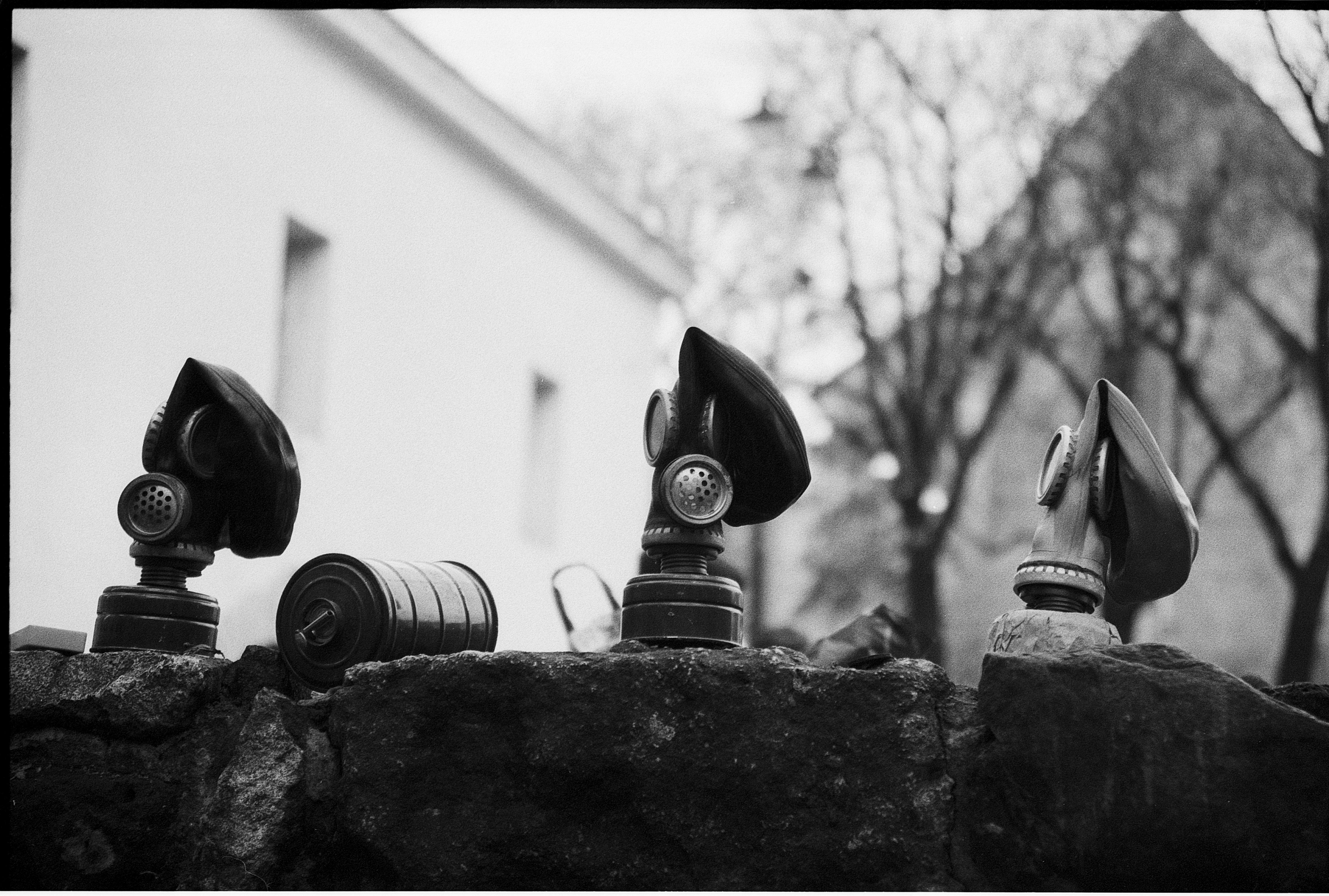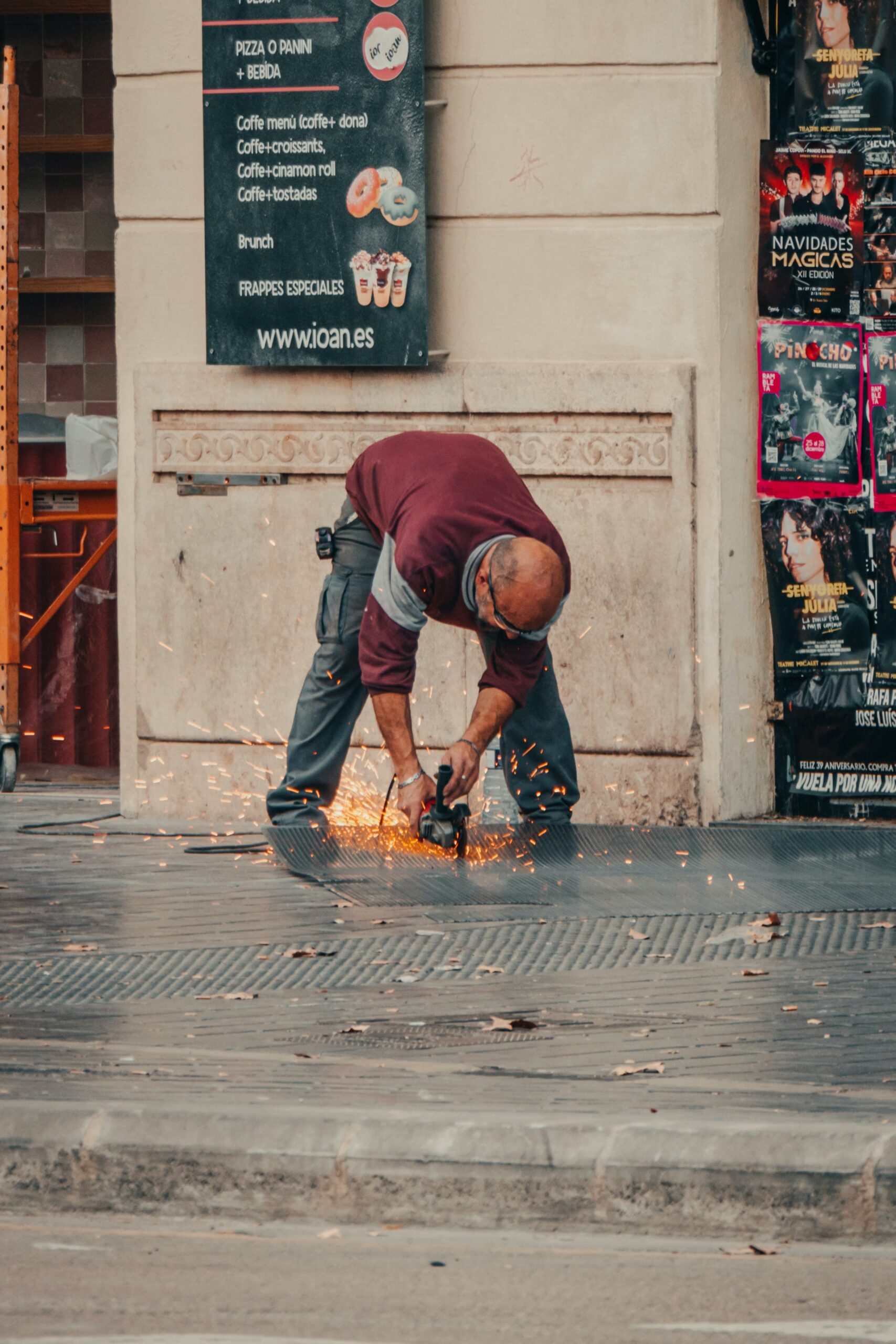In the midst of nature’s fury, it is essential to know how to keep yourself and your loved ones safe during a wildfire. As flames dance and smoke billows, understanding the necessary precautions can make all the difference. From creating a defensible space around your home to packing a “go bag” with essential items, this article will provide you with valuable tips on how to navigate the potentially dangerous terrain of a wildfire. So, fasten your seatbelts and let us embark on this journey of safety together.

Preparing for a Wildfire
Create Defensible Space around Your Home
When it comes to wildfire preparation, creating defensible space around your home is essential. This involves clearing vegetation and maintaining a well-maintained zone that acts as a buffer between your property and the approaching fire. Start by removing dead plants, dry leaves, and branches from your yard. Trim trees and shrubs, keeping them at a safe distance from your home. By creating defensible space, you reduce the risk of fire reaching your property and give firefighters a better chance of defending your home.
Remove Flammable Materials
In addition to creating defensible space, it is crucial to remove any flammable materials around your property. This includes firewood piles, propane tanks, gas canisters, and other combustible items. Store flammable liquids properly in metal containers away from your house. Additionally, regularly clean your gutters and roof of debris, such as dry leaves and pine needles, as they can easily ignite during a wildfire. Removing flammable materials significantly reduces the chances of your home catching fire.
Prepare an Emergency Kit
Preparing an emergency kit is crucial to ensure you have essential supplies readily available in case of a wildfire. Include items such as non-perishable food, water, a first aid kit, batteries, flashlights, a battery-powered radio, and important documents like insurance policies. Additionally, pack any necessary medications, personal hygiene products, and extra clothing. Keep your emergency kit in an easily accessible location, and make sure every member of your household knows where it is.
Have an Evacuation Plan
Having an evacuation plan in place is essential to ensure you and your loved ones can evacuate safely if necessary. Identify multiple escape routes from your neighborhood and establish a meeting point outside the affected area. Plan how you will transport pets, and if possible, arrange to stay with family or friends outside the evacuation zone. Make sure to take into account any specific needs or considerations for elderly family members or those with disabilities. Communicate and practice your evacuation plan with everyone in your household to ensure a smooth and swift evacuation in the event of a wildfire.
Monitoring Fire Conditions
Stay Informed about Fire Updates
Staying informed about the latest fire updates is crucial during a wildfire. Monitor local news stations, radio, and reliable websites for updates on fire locations, containment efforts, and evacuation orders. Subscribe to emergency alerts or notifications provided by your local authorities. Additionally, consider downloading wildfire-related apps that can provide real-time information and evacuation routes. By staying informed, you can make informed decisions regarding your safety and the safety of your loved ones.
Know the Warning Signs
Being aware of the warning signs of an approaching wildfire can help you take action sooner. Keep an eye out for the smell of smoke, increasing winds, and the sound of fire engines or aircraft. Monitor the sky for visible signs of a wildfire, such as darkening clouds, smoke plumes, or flames in the distance. Pay attention to emergency alerts and evacuation orders issued by authorities. Knowing the warning signs allows you to react quickly and evacuate if necessary.
Monitor Fire Danger Levels
Understanding the fire danger levels in your area is crucial for assessing the risk and taking appropriate precautions. Check the National Fire Danger Rating System or your local fire organization’s website for current fire danger ratings. These ratings take into account factors such as weather conditions, fuel moisture, and fire behavior. Pay attention to any fire restrictions or bans that may be in place, as they indicate the severity of the fire danger. By monitoring fire danger levels, you can adjust your preparedness efforts accordingly and stay vigilant during high-risk periods.
Follow Evacuation Orders
If an evacuation order is issued by authorities, it is crucial to follow it promptly. Evacuation orders are issued for your safety, and disregarding them jeopardizes not only your life but also the lives of first responders. Gather your emergency kit, ensure your essential documents are secure, and evacuate immediately via your predetermined escape routes. Be prepared to leave quickly and calmly, following the instructions of law enforcement and emergency personnel. Remember, your safety is the top priority during a wildfire, and following evacuation orders can save lives.
Protecting Your Home
Close Windows and Doors
During a wildfire, it is vital to close all windows and doors to prevent the entry of smoke, embers, and flames. Close any interior doors as well to help compartmentalize your home and reduce the spread of fire within the house. Seal gaps around windows and doors with weather stripping or tape to create a tight seal. By keeping windows and doors closed, you minimize the risk of fire entering your home and improve the chances of it remaining safe.
Cover Vents and Openings
Covering vents and other openings in your home is another crucial step in protecting it from a wildfire. Use duct tape and heavy-duty materials such as metal screens or plywood to cover vents, chimneys, and any other openings that could allow embers to enter. Embers can travel long distances and ignite flammable materials inside your home, so blocking these entry points is essential. Remember to remove the covers once the threat has passed to ensure proper ventilation in your home.
Remove Fuel Sources
Minimizing potential fuel sources around your home is paramount to protecting it from a wildfire. Clear your property of any dead vegetation, dry leaves, and fallen branches. Trim trees and shrubs, keeping them well-maintained and away from structures. Additionally, remove flammable items such as firewood piles, propane tanks, and excess vegetation. By removing fuel sources, you reduce the chances of a wildfire spreading to your property.
Turn Off Gas and Utilities
As part of your wildfire safety measures, it is crucial to turn off the gas and utilities in your home when evacuating. Gas lines and electrical utilities pose a risk during a wildfire, and shutting them off reduces the chance of an explosion or fire. Locate the main gas valve and electric circuit breaker panel in your home, and familiarize yourself with the process of shutting them off. If time permits before evacuating, turn off these services to protect your home and the surrounding area from potential hazards.
Personal Safety Measures
Wear Protective Clothing
When facing a wildfire, wearing protective clothing is essential to minimize the risk of burns and injuries. Opt for long-sleeved shirts, long pants made of non-flammable materials, and sturdy, closed-toe shoes. Ideally, choose clothing with a tightly woven fabric to provide an additional layer of protection. Wear gloves to protect your hands and consider a wide-brimmed hat for sun and heat protection. By dressing appropriately, you enhance your personal safety and reduce the risk of burns and other injuries.
Use an N95 Respirator Mask
During a wildfire, the air quality can be severely impacted by smoke and hazardous particles. To protect yourself from inhaling these harmful substances, use an N95 respirator mask or a higher-rated mask designed to filter out fine particulate matter. These masks form a tight seal around your nose and mouth, filtering out smoke particles and improving the air you breathe. It is advisable to have these masks readily available in your emergency kit for each member of your household.
Stay Indoors If Possible
If wildfire smoke is present or the air quality is poor, staying indoors is the best course of action to protect your health. Close all windows and doors, and use fans or air purifiers equipped with HEPA filters to improve indoor air quality. Minimize your time spent outdoors, especially during peak hours when the smoke is most intense. Keep in mind that smoke can seep into buildings, so taking necessary precautions to clean and purify the air inside your home is crucial for your well-being.
Avoid Physical Exertion
If you find yourself in an area affected by a wildfire or heavy smoke, it is important to avoid physical exertion. Wildfire smoke contains harmful particles, which can exacerbate respiratory conditions and strain your lungs. Engaging in physically demanding activities can increase your breathing rate, allowing more smoke and particles to enter your lungs. Take frequent breaks, avoid activities that require heavy breathing, and listen to your body’s signals. By avoiding physical exertion, you reduce the potential risks associated with inhaling wildfire smoke.

Safe Evacuation Practices
Pack Important Documents
When preparing for an evacuation, be sure to gather and pack important documents to bring with you. These may include identification documents, insurance policies, birth certificates, passports, and medical information. Store them in a waterproof container or a sealed plastic bag to protect them from potential water damage. Having these documents readily available can help facilitate any necessary procedures after the wildfire and assist in the recovery process.
Gather Essential Supplies
To ensure a smooth evacuation, gather essential supplies that you will need during your time away from home. This includes food and water for a minimum of three days, any necessary medications, a first aid kit, personal hygiene items, and extra clothing. Pack items that are lightweight, easily portable, and non-perishable. Remember to include items specific to the needs of children, elderly family members, and pets. By having essential supplies on hand, you will be better prepared to face the challenges of evacuation.
Plan for Pets
When preparing for a wildfire evacuation, it is crucial to have a plan for your pets. Identify pet-friendly accommodations in advance or make arrangements with friends or family outside of the evacuation zone who can temporarily care for your pets. Ensure your pets have collars with identification tags and have their microchip information up to date. Pack a pet emergency kit with food, water, medication, and comfort items for your furry companions. By planning for your pets, you can ensure their safety and well-being during the evacuation process.
Inform Loved Ones
Before evacuating, be sure to inform your loved ones of your evacuation plans. Let family and friends know where you are heading and provide them with emergency contact numbers. Regularly communicate with them throughout the evacuation process to keep them updated on your safety and well-being. Additionally, establish a communication plan in case of separation or communication disruption. By informing your loved ones, you alleviate their worry and ensure they are aware of your whereabouts during an evacuation.
Driving in Wildfire Conditions
Stay Alert and Focused
When driving in wildfire conditions, it is crucial to stay alert and focused on the road. Keep your attention on the task at hand and avoid any distractions such as using your phone or adjusting the radio. Be prepared for sudden changes in visibility due to smoke or ash, and adjust your speed accordingly. Observe traffic signs and any instructions given by emergency personnel on the road. By staying alert, you can navigate safely through the hazardous conditions and help prevent accidents.
Don’t Drive into Smoke or Flames
One of the most important rules when driving in wildfire conditions is to never drive into smoke or flames. Smoke reduces visibility drastically, making it difficult to see hazards on the road or other vehicles. Flames can obstruct the road and pose an immediate danger to your safety. If you encounter smoke or flames while driving, turn around and find an alternative route. Inform authorities if you witness a roadblock or any hazardous conditions. Your safety should always take precedence over reaching your destination.
Use Headlights and Fog Lights
In times of reduced visibility due to smoke or ash, it is crucial to use your headlights and fog lights. Turn on your headlights to ensure other drivers can see you, even during the daytime. However, avoid using high beams as they can reflect off the smoke and worsen visibility. Fog lights, if available in your vehicle, can also improve visibility in smoky conditions. Always use your lights responsibly and be considerate of other drivers on the road.
Follow Roadway Instructions
During a wildfire, roadways may be congested or have temporary closures in place. It is essential to follow any instructions given by emergency personnel or displayed on electronic message boards. These instructions may include detours, lane closures, and speed limit reductions. Adhering to these guidance can help maintain the flow of traffic and ensure the safety of all drivers. Remember to remain patient and calm while driving in wildfire conditions, as it is a challenging time for everyone on the road.

Emergency Communication
Establish an Emergency Contact
In case of separation or communication disruption during a wildfire, it is important to establish an emergency contact outside the affected area. This person should be someone trusted, such as a close family member or friend, who can act as a central point of contact and relay information to concerned parties. Share your emergency contact’s information with all members of your household and advise them to do the same. Having an established emergency contact ensures that important information reaches the right people in a timely manner.
Keep a Battery-Powered Radio
During a wildfire, power outages are common, making it difficult to stay informed about the latest updates. To ensure you can receive information, keep a battery-powered radio in your emergency kit. This will enable you to tune in to local news stations and emergency broadcasts even without access to electricity. Regularly check for updates on evacuation orders, designated shelters, and road closures. A battery-powered radio can be a lifeline of information during a wildfire emergency.
Charge Cellphones and Devices
Before a wildfire emergency, make sure to charge your cellphones and other electronic devices fully. In the event of a power outage, you may rely on these devices for communication and accessing emergency information. Consider investing in portable chargers or power banks that can keep your devices powered for an extended period. During an evacuation, conserve battery life by minimizing non-essential usage. By having charged devices, you can stay connected and informed throughout the wildfire incident.
Have a Backup Charging Option
In addition to charging your cellphones and devices, having a backup charging option is important during a wildfire emergency. Consider investing in a car charger or a solar-powered charger to provide an alternative source of power. These charging options can prove valuable, especially if you find yourself without access to electricity for an extended period. Remember to keep these charging options in your emergency kit to ensure they are easily accessible during an evacuation.
Seeking Shelter
Identify Safe Locations
When seeking shelter during a wildfire, it is crucial to identify safe locations where you can take refuge. Ideally, these locations should be indoors, away from windows, and have a means of ventilation. Basements, interior rooms without windows, or designated shelter areas in public buildings are generally the safest options. Avoid seeking shelter in isolated areas or structures that are highly susceptible to fire, such as wooden sheds or old barns. Identifying safe locations in advance helps streamline your decision-making process during a fast-moving wildfire.
Find Community Shelters
If you are unable to safely shelter in place, it is vital to find community shelters designated by local authorities. These shelters are established to provide temporary accommodations for evacuees during an emergency. Research the locations of these shelters in your community and remain aware of any additional guidelines or requirements imposed due to COVID-19 restrictions. If you have evacuated with pets, inquire about pet-friendly shelters and make necessary arrangements to ensure their safety.
Create Temporary Shelter at Home
In cases where seeking external shelter is not possible, it may be necessary to create a temporary shelter within your own home. Identify an interior room with minimal windows where you can safely take refuge. Gather essential supplies such as pillows, blankets, and mattresses to create a barrier from heat, smoke, and flying debris. Use duct tape and plastic sheeting to seal off any cracks, vents, or other openings that could allow smoke or embers to enter. Remember, creating a temporary shelter should only be done as a last resort when no other safe options are available.
Stay Away from Isolated Areas
When seeking shelter during a wildfire, it is crucial to stay away from isolated areas. Isolated areas pose higher risks, as access to emergency services and resources may be limited. Additionally, they are typically more susceptible to fire due to the lack of nearby resources for containment efforts. During an evacuation or when seeking shelter, prioritize well-populated areas with designated emergency services and established communication networks. Staying away from isolated areas ensures you have access to necessary support and increases your chances of staying safe.

After the Wildfire
Wait for Authorities to Declare Safety
After a wildfire has passed through an area, it is important to wait for authorities to declare the area safe before returning. Even if the immediate threat of the fire has diminished, there may still be hidden dangers such as smoldering debris, unstable structures, and compromised utilities. Observe instructions from emergency officials and local authorities regarding when it is safe to return to your home or the affected area. Patience is key during this phase to ensure your safety and allow emergency crews to complete their work effectively.
Inspect Your Property for Damage
Once authorities have deemed the area safe, it is essential to inspect your property for any damage caused by the wildfire. Start by visually assessing the exterior of your home, checking for any signs of fire damage or compromised structures. Be cautious of any weakened trees or branches that may pose a risk of falling. Inside your home, look for signs of smoke or water damage. If you notice any potential hazards or significant damage, contact professionals to assess the situation and provide necessary repairs.
Avoid Entering Unsafe Areas
During the post-wildfire period, it is crucial to avoid entering any areas deemed unsafe by authorities. This may include areas with unstable structures, downed power lines, or limited access to emergency services. Respect any cordoned-off areas or barricades, as they indicate potential danger. Always follow the instructions and guidance provided by emergency officials and local authorities. By avoiding unsafe areas, you reduce the risk of injury or harm to yourself and allow emergency crews to continue their recovery efforts.
Contact Your Insurance Company
Once you have assessed the damage to your property, it is important to contact your insurance company to initiate a claim. Be prepared to provide detailed documentation, including photographs of the damage and a list of lost or damaged items. Take note of any temporary repairs you may have made to prevent further damage. Insurance adjusters will assess the extent of the damage and guide you through the claims process. Promptly contacting your insurance company ensures a smoother and swifter recovery process.
Long-term Recovery
Clean and Restore Your Property
After a wildfire, the process of cleaning and restoring your property begins. Start by removing fire-damaged debris from your yard and around your home. This includes charred materials, fallen trees, and any hazardous materials. Engage the services of professionals experienced in wildfire cleanup and restoration for more extensive damage. As you clean, take proper precautions, including wearing protective clothing and using appropriate equipment. Restoring your property may be a long-term process, but taking immediate action helps kickstart the recovery journey.
Seek Professional Help if Needed
Depending on the extent of the damage caused by the wildfire, you may need to seek professional help during the recovery phase. Contact specialists such as contractors, electricians, or structural engineers to assess and repair any damage to your home’s electrical system, foundation, or structural integrity. Engaging professionals with experience in post-wildfire restoration ensures the safety and integrity of your property. Additionally, consider working with public adjusters to navigate the insurance claim process and maximize your eligible benefits.
Attend Community Meetings
After a wildfire, attending community meetings can be incredibly valuable for the recovery process. These meetings provide a platform for sharing information, discussing recovery strategies, and connecting with other individuals affected by the wildfire. Listen to updates from local authorities and emergency management agencies, as they often provide important resources and support for the community. Attending community meetings fosters a sense of community resilience and helps you stay informed on long-term recovery efforts.
Take Care of Your Emotional Well-being
Recovering from a wildfire is not just about physical restoration; it is also essential to take care of your emotional well-being. Wildfires can be traumatic experiences, and it is normal to experience a range of emotions, including stress, anxiety, grief, and fear. Seek support from professional counselors or therapists who specialize in trauma if needed. Lean on your support network of friends, family, and neighbors for emotional support. Engage in self-care activities that promote relaxation and reduce stress. Taking care of your emotional well-being is an important part of the long-term recovery process.
In conclusion, preparing for a wildfire requires several proactive steps to ensure the safety of yourself, your loved ones, and your property. Creating defensible space, removing flammable materials, preparing an emergency kit, and having an evacuation plan are essential elements of preparedness. Monitoring fire conditions by staying informed, knowing the warning signs, and following evacuation orders is crucial during a wildfire event. Protecting your home involves closing windows and doors, covering vents and openings, removing fuel sources, and shutting off gas and utilities. Personal safety measures include wearing protective clothing, using an N95 respirator mask, staying indoors if possible, and avoiding physical exertion. Safe evacuation practices involve packing important documents, gathering essential supplies, planning for pets, and informing loved ones. When driving in wildfire conditions, it is important to stay alert, avoid driving into smoke or flames, use headlights and fog lights, and follow roadway instructions. Establishing an emergency contact, keeping a battery-powered radio, charging cellphones and devices, and having a backup charging option are crucial for emergency communication. Seeking shelter in safe locations, finding community shelters, creating temporary shelter at home, and staying away from isolated areas are vital during a wildfire event. After the wildfire, waiting for authorities to declare safety, inspecting your property for damage, avoiding unsafe areas, and contacting your insurance company are necessary steps. Long-term recovery involves cleaning and restoring your property, seeking professional help if needed, attending community meetings, and taking care of your emotional well-being. By following these comprehensive guidelines, you can stay safe and well-prepared during a wildfire event.






